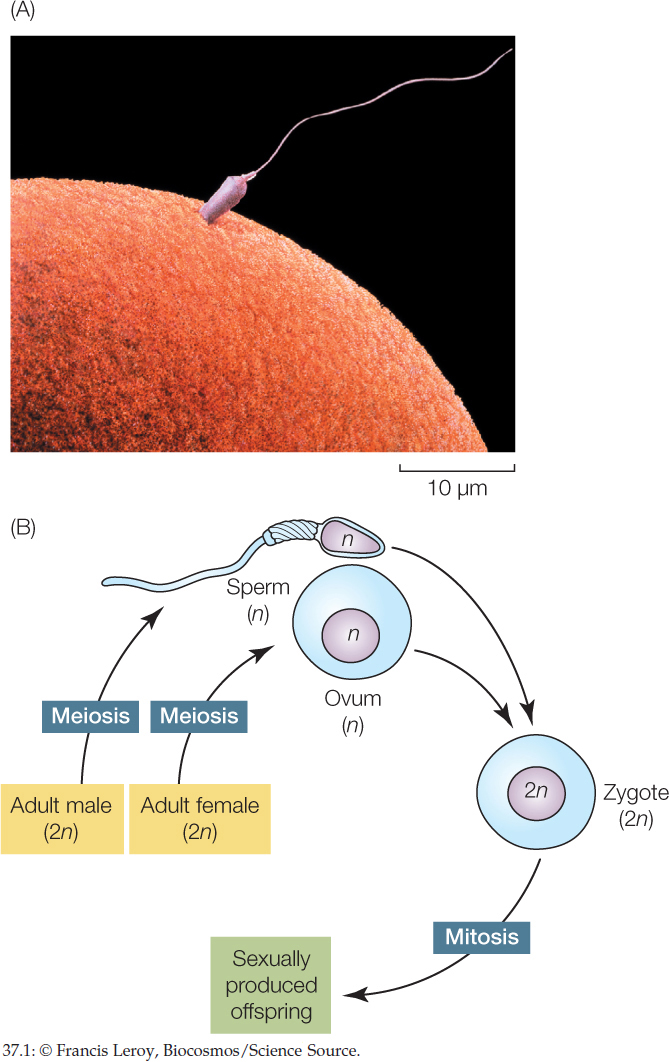
Figure 37.1: Sexual Reproduction in Animals (A) The sperm and egg of a human. (B) The essence of animal sexual reproduction is the combination of genes from two individuals. Animals have diplontic life cycles (see Figure 7.3). The body cells that are not specialized for reproduction (called somatic cells) have two copies of each chromosome and thus are diploid (2n). The gametes, by contrast, have only a single copy of each chromosome and thus are haploid (n). When a sperm and egg combine, they form a single-celled zygote that is 2n (diploid), and the zygote subsequently multiplies by mitosis to develop into the adult.